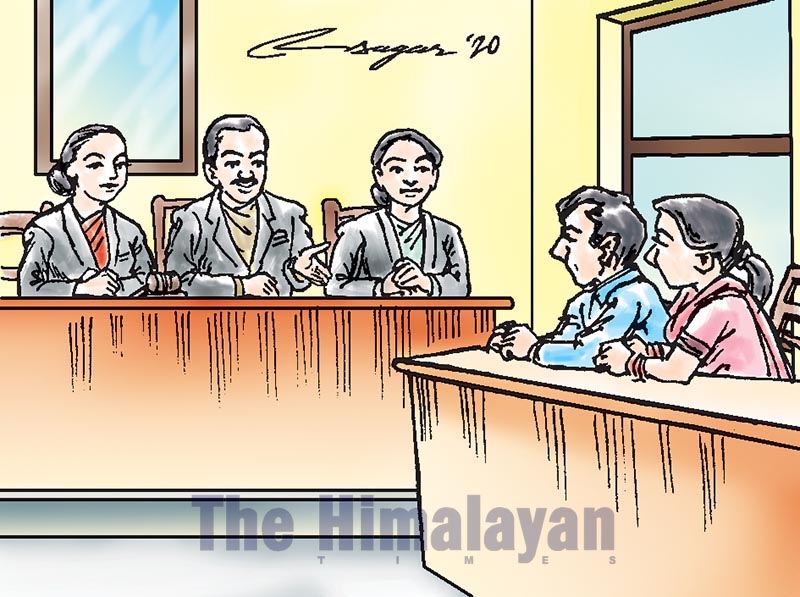Judicial committees: Forum for dialogue
The judicial committee is familiar with the customs of the neighbourhood and nuances of the local idiom. So it is better able to understand why certain things are said or done. It is an institution nearer to the people
The new federal constitution, enacted by the popularly elected Constituent Assembly (CA) in 2015, replaced the unitary organisation through federal restructuring of the state. The constitution restructured the state into seven provinces and 753 local governments, instituting three tiers of government - local, provincial and federal. A distinct feature of the constitution is that it attaches greater importance to local government. Article 217 provisions a judicial committee (Nyayik Samiti), which is further elaborated in sections 47-54 of the Local Government Operation Act 2017 that governs the operation and management of the local governments - rural municipalities (Gaupalikas) and municipalities (Nagarpalikas) in the country.
The judicial committees are active and functional in most of the districts, and the deputy mayors who coordinate the committee have also taken the lead in building the competence of its members and community-based mediators. Deputy Mayors like Chakra Aryal from Banganga Municipality in Kapilvastu and Iman Singh from Rapti Municipality in Chitwan district, among others, offer exemplary cases of pro-active deputy mayors committed to fully utilising the potential of the judicial committees in resolving disputes at the local level through a non-adversarial participatory approach.
Needless to mention, the overall intent and purpose of the provision relating to the judicial committee has been to create an alternative justice delivery mechanism under the tutelage of the local governments - Gaupalikas and Nagarpalikas - to settle disputes primarily through mediation and interest-based negotiation. The committee aims at making justice accessible and affordable to ordinary people in the local communities.
The Nyayik Samiti is significant for many reasons as it aims to enhance the delivery of justice to the ordinary masses unable to access the court and finance the associated exorbitant expenses. There are several advantages of a mechanism like the Nyayik Samiti at the local level in resolving disputes and advancing peace and harmony at the community level. It can dispose of a large number of disputes and petty cases through a simple and non-adjudicatory process and thus relieve the burden on the regular courts. Moreover, a large number of cases can be resolved in a peaceful, non-confrontational, conciliatory and harmonious manner. The local people, in general, are happy with the delivery of justice in their proximity. Appeals and revisions from these decisions are non-existent. The disputants at the local level can conveniently attend the dispute resolution proceedings, and thus there are no interferences with their normal activities carried out for their living.
The judicial committee can bring justice nearer to the people at the local level without involving any expenditure, which would, otherwise, have to be incurred in establishing access to the regular courts. Similarly, the judicial committee is familiar with the customs of the neighbourhood and nuances of the local idiom. So it is better able to understand why certain things are said or done. It is an institution nearer to the people. There is greater opportunity for resolution of disputes. And a decision taken by it does not leave behind that trail of bitterness, which generally follows the litigation in ordinary courts. People in a village know each other so well that the parties to a dispute cannot conceal or produce false statements easily, and those who tell lies before such a mechanism face the risk of being looked down upon and even boycotted by others. Not only In Nepal, such a mechanism also exists in other countries like India and the Philippines.
The Barangay Justice System in the Philippines, like the Nyayik Samiti in Nepal, aims to promote speedy administration of justice, minimise indiscriminate filing of cases in courts, reduce the congestion of court dockets and thereby enhance the quality of justice dispensed by the courts, and perpetuate and recognise the time-honoured tradition of amicably settling disputes at the community level. Under the system, the main strategy for settling disputes is to provide a venue to search for a solution that is mutually acceptable to the disputing parties. Hence, the primary role of the system is not to decide disputes and impose a solution on the parties but to assist the parties in discussing a possible amicable settlement.
Community mediators in the Philippines do not act as judges or adjudicators of disputes. They perform as facilitators and conciliators for arriving at possible solutions. For this reason, the personal appearance and participation of the disputing parties are necessary, while the non-appearance of the parties will have corresponding sanctions. It thus provides an alternative mode for dispute resolution to the costly and lengthy judicial procedures for settling disputes. Simply put, the Barangay Justice System provides a friendly, inexpensive and speedy forum for the settlement of disputes where the parties can freely explore options for amicably resolving their disputes. The judicial committee in Nepal is expected to set an example as a forum for dialogue and conversation in enhancing the participatory process for the resolution of disputes, in which the disputing parties are enabled to sort out their issues and problems to arrive at a mutually satisfactory outcome.






